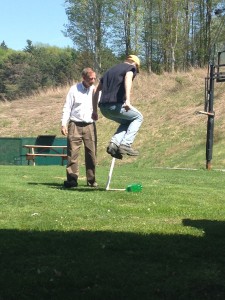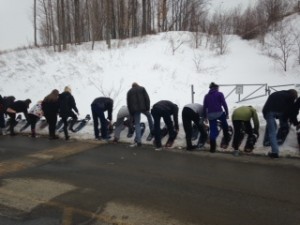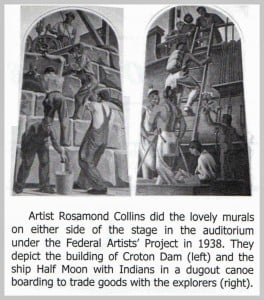I had the wonderful opportunity to visit Notre Dame University for their annual Excellence in Teaching Conference at the end of October. Notre Dame has a strong commitment to scholarly research. As opposed to the “hustle bustle” of most conferences where hundreds of everyday practitioners are presenting their best new ideas, Notre Dame offered only four sessions, which were all led by renowned researchers in the field. Presentations on Creating Digitally Native Students; Problem Based Learning through Project Lead the Way and a session on the Importance of Formative Feedback were given through articulating the most recent research in the field and how it can be applied everyday in the classroom.
However the most interesting and relevant session was on “The Psychology of Achievement.” Presenters on this topic were lead researchers at the University of Pennsylvania’s Duckworth Lab on “Improving Student Academic Performance and Learning by Developing Students’ Non-Cognitive Skills” with Andrea Duckworth.
The central idea in this session was an explanation on why we need to teach kids to be more self-controlled and “grittier.” Through Duckworth’s research, it was determined that as educators, we really don’t know how to build grit in students. The presenter contends that schools are not using true predictors of success when they only measure students through IQ and general knowledge tests. Research has shown that IQ is not an accurate forecaster of which children will be successful. Therefore, teachers should be putting a greater focus on building students’ non- cognitive skills such as: “belonging, goal-setting, self-efficacy, mind set, capital and social attainment motivation.” As Duckworth stated, “Grit is living life like it’s a marathon, not a sprint.” As educators, we need to teach students that they can fail and persevere at the same time.
Here are some practical ways that schools can accomplish this goal?
First, we need to get each student to aspire to college through developing a “change is possible mindset” where students understand that past behaviors are not necessarily predictors of the future. This can be accomplished through using real life scenarios to teach students how to overcome problems, as well as, giving students “grit scales” that help them identify their weaknesses when trying to accomplish goals. The Duckworth Lab https://sites.sas.upenn.edu/duckworth offers a variety of useful resources including these “grit scales” that are available for educators.
Secondly, teachers need to give “wise feedback” to prepare our students for what lies ahead. This means giving criticism with high standards. We can do this by creating a “culture of coaching” where teachers give regular feedback to students that is very specific and useful for improving student performance. Grading practices where a teacher gives a student a checkmark for work completed does not help a student to grow or improve their performance.
Third, we need to focus more on designing learning experiences where students see a real life application and value in what they are doing especially when it comes to planning for college. Counselors and teachers need to give students deliberate positive messages and hands-on exercises that not only prepare students to apply to college but help them to make the successful transition between high school and college. This means removing any negative attitudes about college and helping students all the way through college matriculation. This might look like, opening college emails together, signing promissory notes, registering for classes and filling out health forms with students. Many children come from homes where there is no support for these types of activities and without this help; students could easily develop a negative mind-set about their future.
One of the most important things that educators can do to increase student success after high school is to reduce “hand-holding.” Researchers suggest that academic independence should increase the older students get. By the time students are juniors and seniors, teachers should not allow extra credit, give assignments that require long-range planning and promote self-advocacy through internship type programs.
Lastly, we need to work more frequently on helping students plan for the “obstacle in mind.” When large projects and task are at hand, teachers and counselors need to take time to help students develop a plan of action for success. As an example, before students begin an assignment or task, they should write down the goal of the project, the best outcome they expect, an obstacle they might face and then an “if/then plan” to overcome and persevere to get the project finished. This is a useful strategy that can be utilized in all subject areas, as well as, for longer range planning such as college.
Concluding the session, The Marshmallow Test by Dr. Walter Mischel, a Doctor of Psychology at Columbia University, was mentioned as a good introduction to the topic of self-control. Dr. Mischel was recently on the Colbert Report, which gives a quick, yet entertaining overview of the topic and a good starting point for a faculty discussion.
http://thecolbertreport.cc.com/videos/g36k7p/walter-mischel
Besides a number of articles, the presenters gave a myriad of resources for those who were interested in furthering developing these ideas in their schools and to continue their work.
Character Lab: http://characterlab.org/
WOOP/MCII website: http://www.woopmylife.org/
PERTS: https://p3.perts.net/programs
ScholarCentric: http://www.scholarcentric.com/
Over the last few years, research on the topic of developing self–control and grit in students has grown tremendously. Through on-going collaboration with practitioners, these research findings will help schools develop independent, persistent and diligent students who are ready to face the challenges ahead of them.
Do you have other ideas for how we can develop persistence in children?


